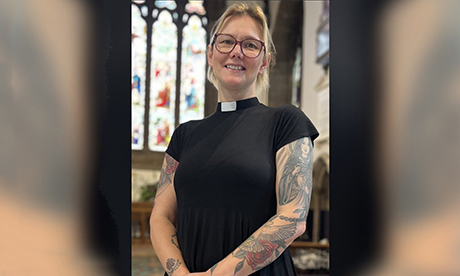Canterbury Cathedral’s recent appointment of a tattooed priest as the new Canon Precentor and Residentiary Canon-designate has sparked both praise and controversy.
Rev. Wendy Dalrymple, previously the rector of All Saints with Holy Trinity in Loughborough, England, has garnered attention for her arm tattoos, leading to a mixed reaction from the online community.
The announcement of her new role at Canterbury Cathedral was met with immediate backlash on social media.
One user wrote, “The tats [tattoos] are disgusting and should bar her from any religious role.”
Another Twitter user wrote of Rev. Dalrymple’s tattoos, “So @CburyCathedral, you have gone woke.”
However, the cathedral swiftly turned off comments on the post to prevent further negativity.
Despite the online criticism, Dalrymple remained positive and expressed her excitement for the next chapter in her spiritual journey. Over the past eight years, she had successfully transformed her previous church into an intercultural worshipping community, fostering inclusivity for people from diverse backgrounds.
In response to the negative comments, Dean of Canterbury David Monteith defended Dalrymple, expressing his sadness at the abuse she had received.
A spokesperson for Canterbury Cathedral emphasised that while the majority of feedback about her appointment was positive, it was unfortunately not uncommon for women in leadership roles to face online abuse based on their appearance.
Dalrymple’s supporters highlighted that her tattoos did not diminish her Christian values or ability to lead. Instead, they saw her ink as an opportunity to start meaningful conversations and break down barriers. Some remarked that her tattoos made her more relatable to people from different backgrounds, showing them that individuals like themselves were welcome in the church.
Tattoos represent vocation and faith
The tattooed priest has a collection of meaningful tattoos, each representing a particular moment in her life and expressing her vocation and faith. Among them, she has a chi-ro, one of the earliest forms of Christogram, which symbolises her Christian faith. She also has designs adapted from a modern icon of St Mary Magdalene and an artwork inspired by Ben Wildflower, reflecting the incarnation.
Dalrymple’s experience with her tattoos has been overwhelmingly positive, with many people finding them a source of curiosity and even admiration. She believes that tattoos are now so common that they can help break down barriers rather than create them.
Despite her unconventional appearance, Dalrymple emphasises that she is still a traditional priest and wears the full robe on Sunday mornings.
As she prepares to take on her new role in Canterbury, Rev. Dalrymple remains focused on her mission to serve the diocese and the Anglican Communion with creativity and imagination.
Even with the initial backlash, the overwhelming support she has received from colleagues and well-wishers has buoyed her spirits and reinforced Dalrymple’s belief in the power of tattoos to promote inclusivity within the church.
